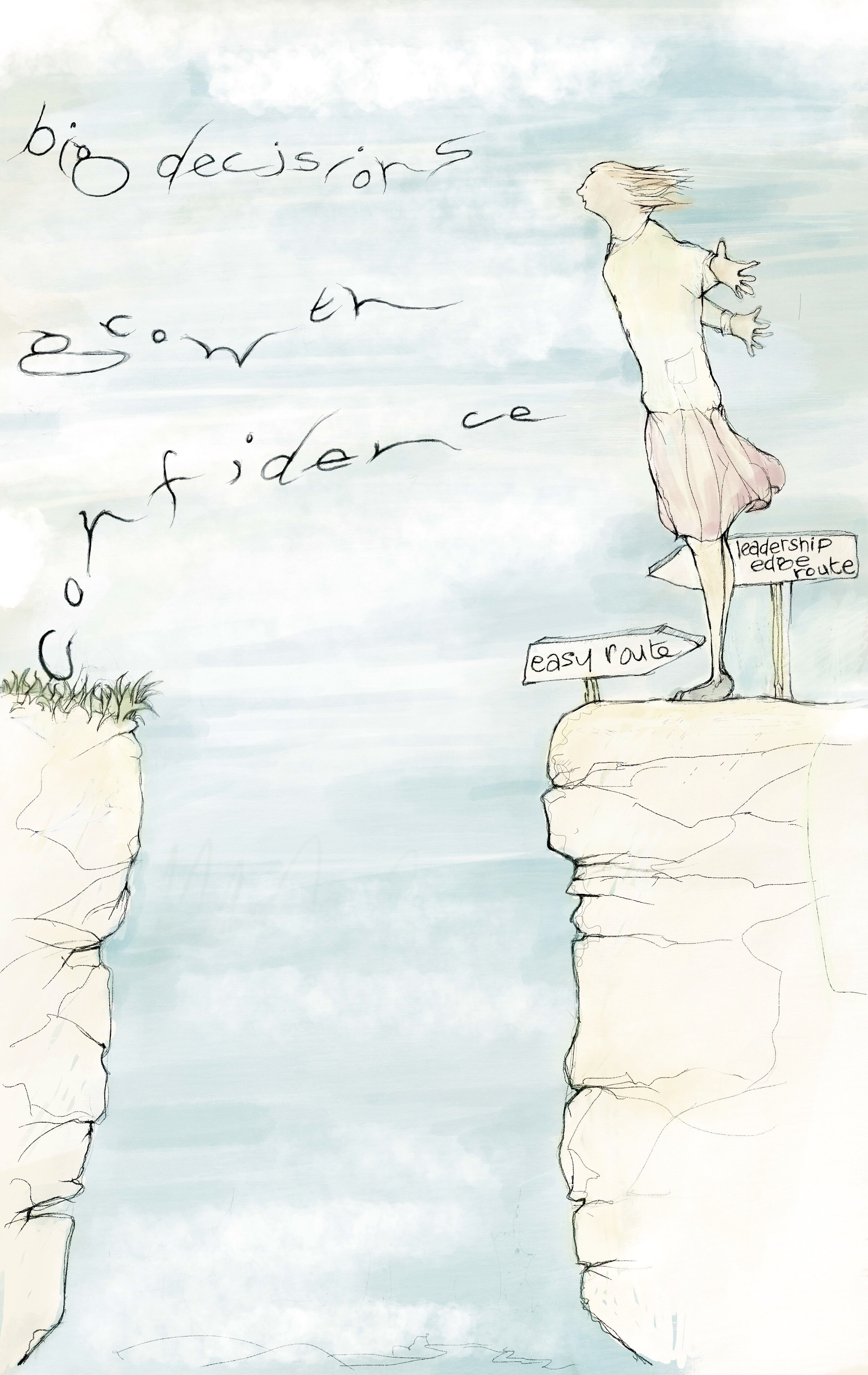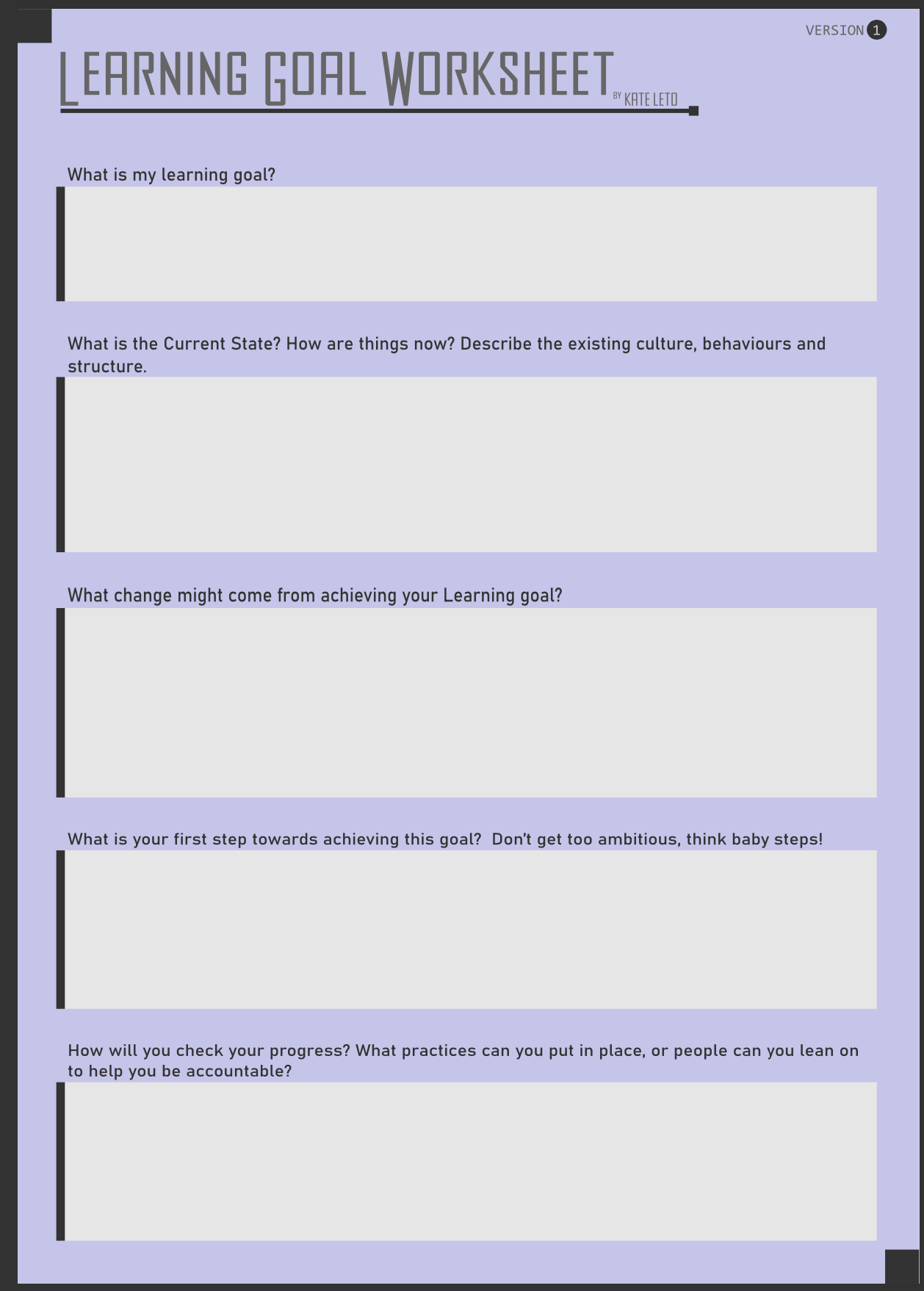Product Leadership Essentials: What is your "Leadership Edge"?
Illustration by artinker.com for Kate Leto
Is there an aspect of leadership that, when you approach it, makes you feel like you're about to step off a cliff?
Maybe it's making big decisions, giving feedback to a team member, or managing up in your organisation. Or it could be handling conflict among team members, owning your own mistakes, or even displaying confidence in your own (or your team's) abilities.
It almost doesn't matter what the specific edge is for you. Whatever it is that gives you a little vertigo when you think about it, that's the direction to lean into if you want to grow as a leader. That doesn't mean it's easy, of course. Pushing your leadership edge is, by definition, edgy.
But facing your fears and pushing against that edge doesn't necessarily mean you have to take a flying leap off the cliff. Growth can start by simply "poking a toe over."
So how do you get started with incremental growth that takes you to your leadership edge and beyond? Here are a few ideas.
Create Learning goals - not just Performance goals
Pushing your leadership edge can seem (and be) difficult. For many of us, it's easier and safer to avoid the edge, skirt around it, or go the other way. Creating an achievable Learning goal can be a step in the right direction.
I’ve written about Learning and Performance goals previously, but here’s a quick refresh.
Stanford University psychologist Carol Dweck has defined Performance goals versus Learning goals in the following way:
Performance goals are about “winning positive judgments of your competence and avoiding negative ones. In other words, when students pursue performance goals they’re concerned with their level of intelligence: They want to look smart (to themselves or others) and avoid looking dumb.” A person usually does this by playing it safe.
Learning goals are ones that are about increasing your competence. “It reflects a desire to learn new skills, master new tasks, or understand new things — a desire to get smarter.”
As an example, recently, a client stated his initial goal for our coaching work together as:
“I want to be the best leader in my country at leading transformations.”
While creating the goal to aim for is worthwhile, the chance of actually making that goal a reality is far outside our control and I’d imagine an impossible challenge to try to achieve. How would you go about doing this? How could you explicitly say that you “are the best?”
Together, we worked at re-stating his ambition into a Learning goal (also known as a Mastery goal)-
“I want to learn how to be the best in my country at leading transformations ”
— the goal becomes geared toward learning what it takes to become a leading product manager, not achieving a specific set of tasks.
This slight shift in wording is actually a big shift in intention, and it makes a world of difference when sensing whether or not we’re making progress towards achieving the goal.
As Dweck says, by focusing on Learning instead of Performance, “failure is likely to provoke continued effort.
Once you have a Learning goal in mind, let’s break it down and identify your first Learning step. (After all, working towards achieving this goal is an iterative process.)
Ask yourself these questions:
What is my Learning goal?
What’s the current state? How are things now? Think about your existing situation, including behaviours, structure and culture.
What changes might come from achieving this Learning goal?
What’s your first step towards achieving this goal? Don’t get too ambitious. Think baby steps!
I’ve created a worksheet to help you think through the questions and track your progress.
For your own PDF copy of the Learning Goal worksheet, drop me a line here.
Designing your first step
The first goal can be small, like committing to spending a few minutes each day reading something informative or listening to a podcast about an area you struggle with. If you just aren’t comfortable with conflict, for instance, read about how to handle conflict well. As you gradually spend more time thinking about and exploring your fears, you'll also start to normalise the idea that you’re not alone in the challenge; others are facing it too and bravely poking their toe over.
Even talking to a colleague, mentor, or coach can be a good first step. Verbalizing the issue and sharing it, getting it off your chest can make you feel less alone and more supported.
In the example of the Learning Goals worksheet that I’ve completed below, the coachee would like to learn more about giving meaningful feedback and has designed her first step around actually asking for feedback. The first step is completely up to you. Just make sure it’s something you feel is feasible and useful as you work towards your greater learning goal.
Creating Learning goals for yourself is a great way to start and keep moving in the right direction, rather than the path of least resistance.
Sample of a Learning Goal focused on learning how to give meaningful feedback. For a PDF version of the Learning Goals worksheet, contact me here.
Learn from a diverse group of leaders
Make an effort to connect with leaders from across your organisation, especially those who don't think or lead the same way you do.
Observe how they interact with colleagues and team members. How do they build relationships and handle tricky situations? Do they use humour to break the ice or are they more direct in flagging and dealing with tension? How do they make decisions? Is it all about the data or more instinctive? Or are they striking for consensus? How do they influence decisions without taking control?
We can learn a lot by observing and trying things out for ourselves. Call it trial and error or call it fake it till you make it. It’s all about learning what works for you as you dip that toe over the leadership edge.
If you’re feeling stifled by lack of leadership diversity within your organization, you can also look outside for inspiration. One way to do this is to bring in a coach. Coaches can help you explore your leadership edges and provide a different perspective on the problems you face. I don't say this just because I am a coach, I also have coaches that help me find new ways of looking at my leadership practice and find it’s an essential method to widen my perspective and better understand what might be holding me back.
Another way is to find a community of leaders who support each other with their leadership challenges (or even start one yourself).
You can also use social media to seek out influencers who talk about subjects close to your edge. Many of these folks also lead communities that you can get involved with, and that may make it easier to meet other leaders who can help you learn and grow.
Don't get stuck - let your leadership edge evolve!
The stories we tell ourselves about the way we lead, and what our edge might be, may not always be accurate. Even if they are, the story can change with us as we change.
Maybe the story we tell ourselves includes something like, "My stakeholders don’t think I’m qualified for this new promotion. So every time I’m in a meeting with them, I don’t speak because I don’t want to give them more proof.”
But telling the same story over and over again, regardless of whether it is true or not, reinforces the outcome of the story. The more you tell yourself that you're afraid of something, or not good enough, the more you hold yourself back.
Instead, take an evidentiary approach to the situation, and simply ask yourself at these moments, “is that true?” “Do I have any evidence, for or against this story?”
Take that information in, but allow yourself to re-write the story. Look back at your experiences, professionally or personally, and find examples to challenge your narrative.
A client recently mentioned to me that she didn’t feel like she was recognised by her senior management as reliable in the organisation. After asking her what evidence she had, if it were true, and talking through her response, she realised it was a story in her mind and there really wasn’t anything that she could point to. It was an insightful moment for my client that changed the focus of our work together. It was also backed-up a week later when she received her performance review which included a glowing review from all of her managers. Oh, and she got a promotion too!
The stories that we tell ourselves can be very strong, and limit our potential to push our leadership edge. To start to build the habit of looking for evidence, another client of mine has a Post-it hanging on his monitor, reminder him to ask himself: “Is it true?”
Push your Leadership edge by asking yourself one simple question: “Is it true?”
These are just a few ways you can start to push your "leadership edge" and kickstart your growth.
Ready to get really curious about your own “leadership edge?” Drop me a line to find out more about how we can work together to discover and push past your “leadership edge” through individual and group Leadership Coaching offerings. I look forward to hearing from you!
Also, here’s some suggested reading and inspiration for this post to continue your discovery of your own leadership edge:
“Which should you have? Performance Goals versus Leading Goals?”
“Goals Gone off the Rails? Here are 3 Ways to Get Back on Track”
“The Authenticity Paradox” by Herminia Ibarra. Authentic Leadership (HBR Emotional Intelligence Series) Harvard Business Review Press.
“Breaking the cycle of self-doubt: 5 ways to stop feeling like an imposter (Part 2)”
Subscribe to Product Leadership Essentials
Sign-up to my email newsletter to learn more about how to better understand and build your authentic Product Leadership skills.




